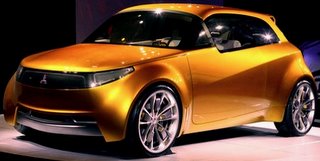New York Turn On

The N Y Times ran a guest editorial on Sunday that effectively conveys the vast potential of the Plug In in both our transportation and stationary electric sectors.
Turn on the Electric Road
By DAVID MORRIS
Published: October 8, 2006
Minneapolis
LAST summer, New York State took a page from California’s playbook, using state policy to jump-start a 21st century automobile industry. Albany started a $10 million program to convert its fleet of 600 hybrid vehicles to plug-in electric vehicles and pledged to spend another $10 million to encourage gas stations to install ethanol pumps. Because companies bidding for New York’s conversion business must promise to build their facilities in the state, the plan may help move New York to the vanguard of a small industry with big potential.
New York’s commitment, combined with Google’s recent announcement that its new investment company will focus on commercializing an electric/alcohol vehicle, gives increased momentum to a technological concept that is rapidly winning supporters.
In less than three years, a coalition of environmentalists, entrepreneurs and tinkerers has developed a viable strategy to reduce our dependence on oil and relieve pollution in densely populated areas like metropolitan New York.
Today, hundreds of thousands of hybrid vehicles and millions of flexible-fueled vehicles able to run on ethanol or gas are on the road. They lay the foundation for an oil-free transportation system; yet each technology suffers a key limitation.
The current hybrid is an entirely gasoline-powered vehicle with an electric motor assist. Though that saves fuel, it isn’t a long-term solution because the savings are too modest. With a plug-in hybrid, however, electricity becomes the primary fuel, which not only saves oil, it saves money. In New York, driving on electricity would cost about 2.5 cents per mile compared to 10 cents per mile on gasoline.
To overcome the limited driving range allowed by electric batteries, the plug-in hybrid relies on a backup gasoline engine. With electricity as the primary driver, the amount of fuel required for the backup engine can fall by as much as 85 percent.
A plug-in hybrid also overcomes the chief limitation of flexible-fueled vehicles: an insufficient supply of biomass derived from corn or other natural sources to power them. We can grow enough biomass to fuel an entire nation of backup engines.
clip
Because of its density and the unique configuration of its electrical network, New York City generates 80 percent of its peak electricity internally. Owners of plug-in hybrids could use off-peak electricity at night to charge their cars’ batteries. At peak times, the local utility could contract to draw electricity from those same batteries. Toyota has already unveiled a prototype Prius that both imports and exports electricity.
clip
Imagine a transportation system that reduces oil consumption by 50 percent or even 100 percent. Imagine upstate cellulose and hydroelectricity fueling cars and trucks throughout the state.
Imagine New York factories producing the high-tech vehicles of the future.
All of this would have been pie in the sky just a short time ago.
The recent announcements by New York State and Google, however, show the possibilities are real.
Their actions should embolden policymakers everywhere to embrace this promising new technology.
David Morris,the vice president of the Institute for Local Self-Reliance, is the author of “Driving Our Way to Energy Independence.”
Become a Partner today.
Sign the On Line Petition
more news
HOME

0 Comments:
Post a Comment
<< Home